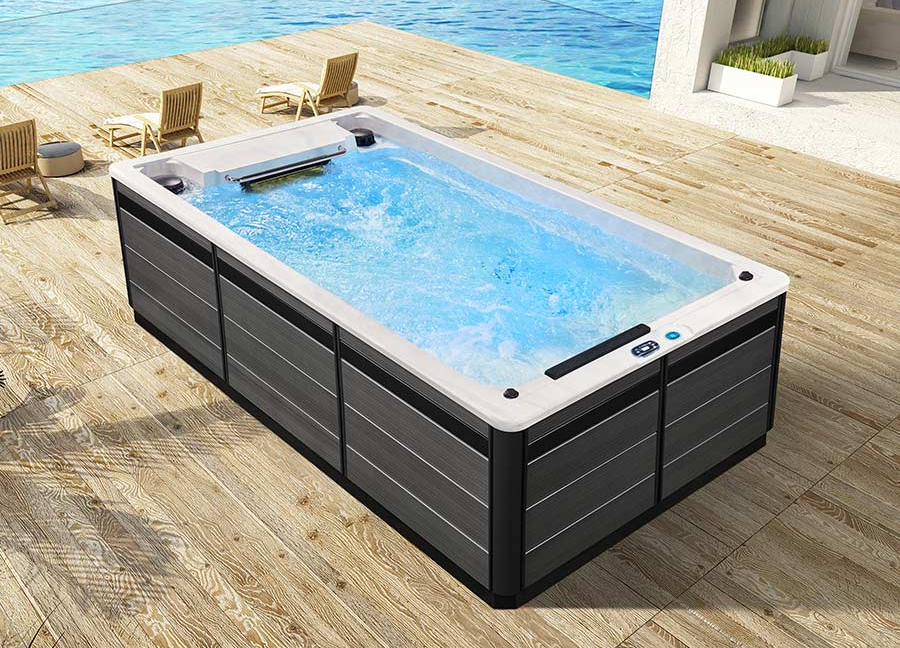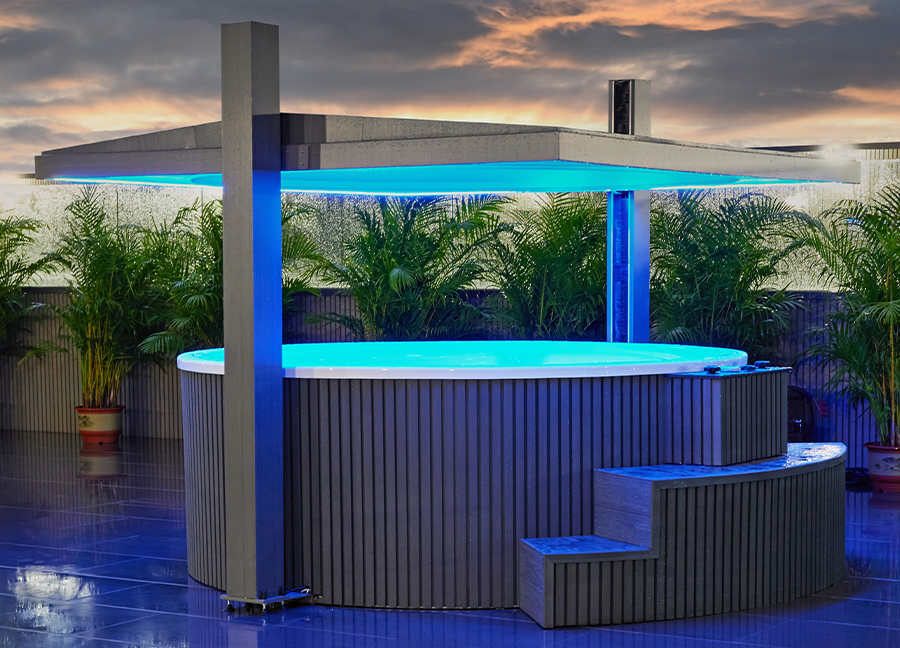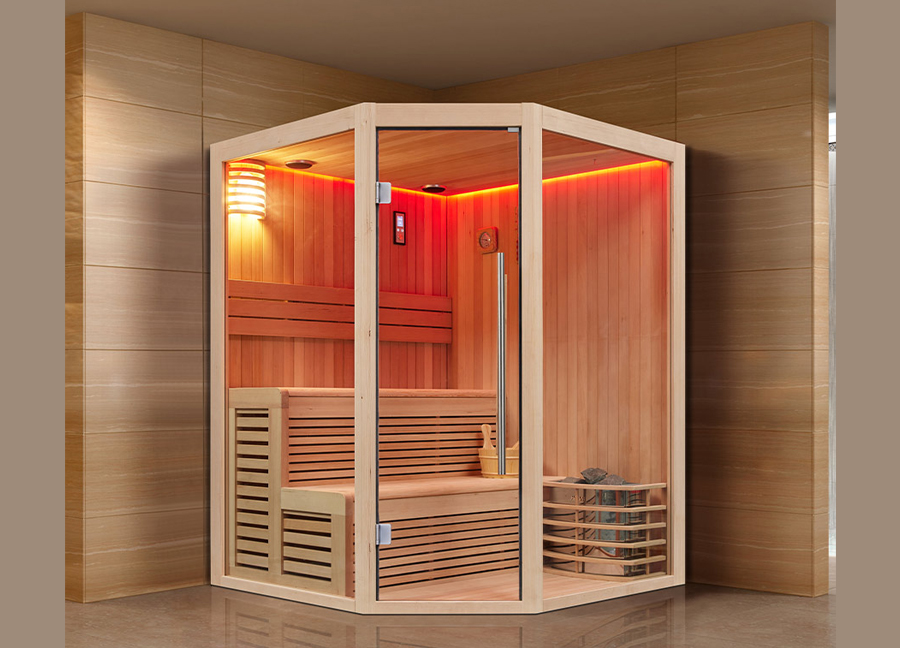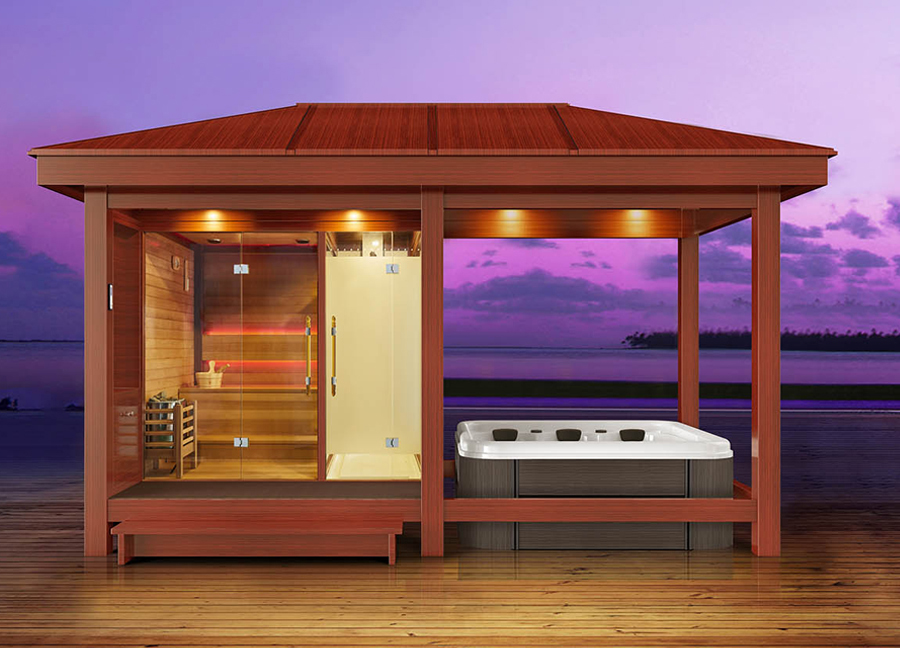Compared to traditional bathtubs, swim spa tubs combine multiple functions, such as swimming, massage, and hydrotherapy. Their complex structure and diverse features cater to the exercise and relaxation needs of different users. However, many people question the lifespan of a swim spa tub: "How long can a swim spa tub last? What factors affect its lifespan?"
This article will analyze the lifespan of a swim spa tub in detail, focusing on structural characteristics, operating environment, component lifespan, and daily maintenance, to help users scientifically understand and properly maintain this device.
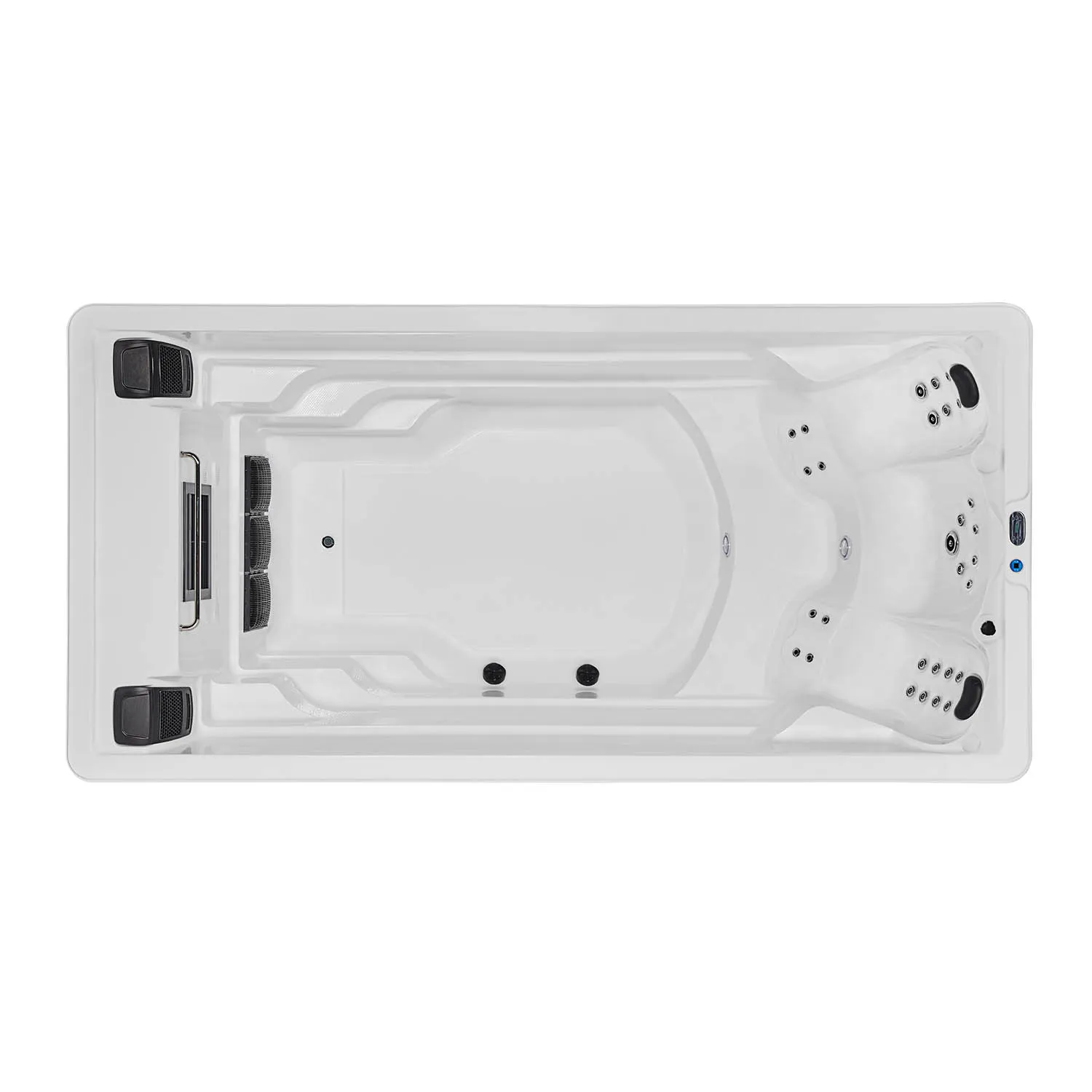
What are the components of a swim spa tub?
To understand the lifespan of a swim spa tub, it's important to first understand its structure and components. A swim spa tub typically consists of the following core parts:
1. Bathtub Body
The bathtub body is the core of a swim spa tub, carrying the weight of the water and providing space for use.
Common materials include:
• Acrylic: Lightweight, aesthetically pleasing, smooth, and easy to clean, but prone to scratching and can deteriorate due to long-term UV exposure.
• Fiberglass reinforced plastic (FRP) composite material: High strength, corrosion resistance, and good impact resistance, suitable for large bathtubs.
• Stainless steel or metal alloys: Extremely durable, but costly and require high installation and maintenance.
The material and manufacturing process of the bathtub itself directly impact its lifespan. High-quality materials generally last over 15 years, while lower-quality materials may age, discolor, or crack after only 5-10 years.
2. Water Circulation and Pump System
A swim spa tub's water circulation system includes the pump, piping, filtration, and jet system:
• Pump: Circulates water, ensuring water cleanliness and providing the desired hydromassage effect. The pump's lifespan is generally between 5 and 10 years, depending on frequency of use, load, and maintenance.
• Piping: Responsible for water transportation. These pipes, including PVC or PE, are highly corrosion-resistant, but may age or leak under prolonged high-pressure use or with poor water quality.
• Filtration: Removes impurities and microorganisms from the water, protecting user health and extending the lifespan of the pump and piping. Filter cartridges and screens require regular replacement.
3. Air and Massage System
Some swim spas are equipped with air massage or hydrotherapy jet systems:
• Jets and nozzles: Provide massage, hydrotherapy bubbles, or water flow control. Jets generally have a long lifespan, but rubber or plastic parts may degrade over time.
• Air pump and heat pump: Provide air bubbles or water temperature control. The motor typically has a lifespan of 5 to 8 years, but requires good maintenance and waterproofing.
4. Heating and Temperature Control System
Swim spas often have a constant temperature heating system to maintain a comfortable water temperature:
• Electric heater: Typically has a lifespan of 5 to 10 years, depending on frequency of use and water quality. Scale accumulation can reduce heating efficiency and even damage the heating element.
• Thermostat and sensor: Regulate water temperature. Electronic components have a long lifespan, but moisture or voltage fluctuations may affect their lifespan.
5. Control System and Electronic Components
Modern swim spas often feature intelligent control systems:
• Control panel: Controls water flow, temperature, and massage functions. The touchscreen or buttons typically have a lifespan of 5 to 10 years.
• Circuits and Sensors: High-quality, waterproof circuit boards can last over 10 years, but they may fail prematurely if exposed to humidity or lack of maintenance.
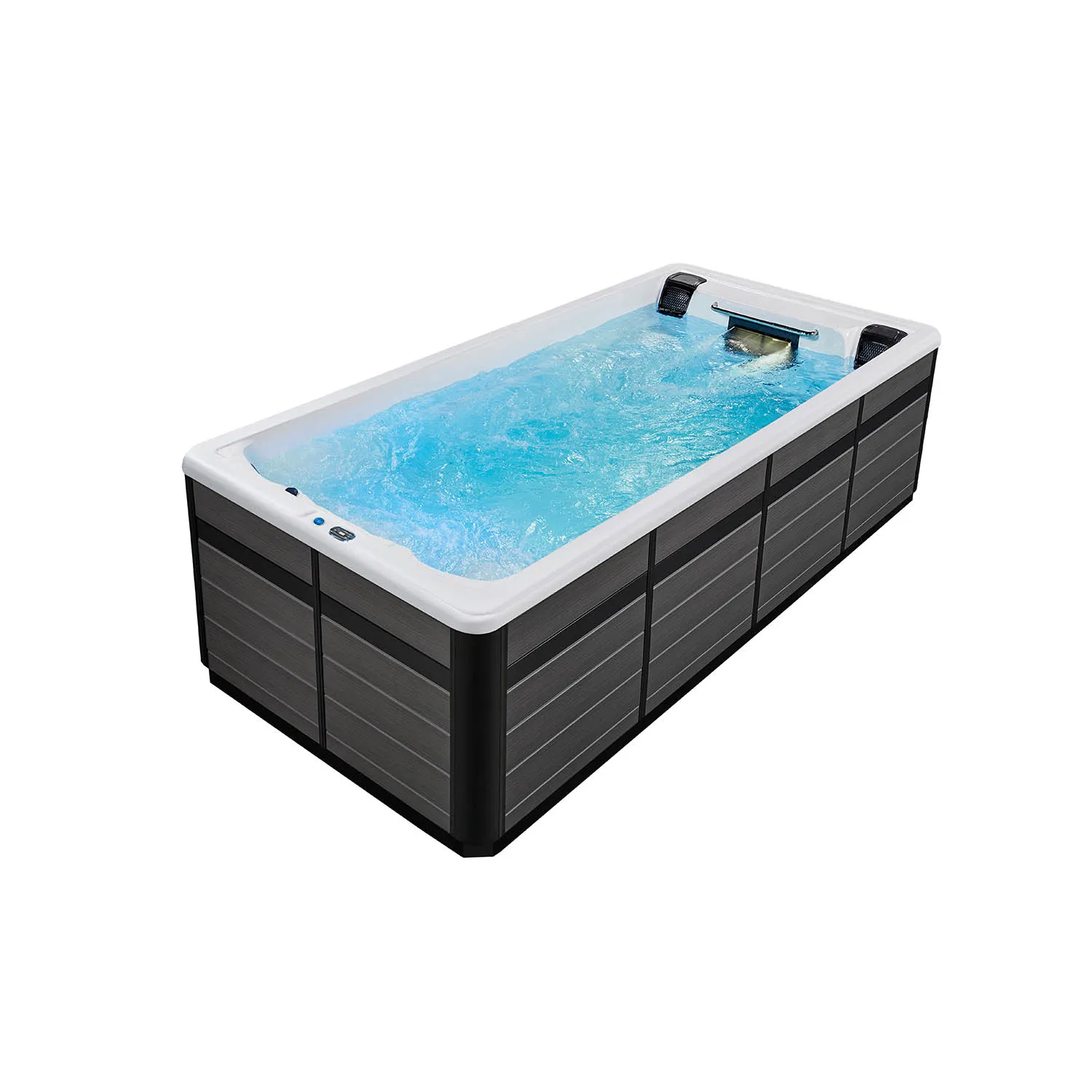
What is the overall lifespan of a swim spa tub?
Taking all of the above into account, the overall lifespan of a swim spa tub depends primarily on the quality of the materials, the lifespan of the components, and regular maintenance. Generally speaking:
1. Overall Lifespan
High-quality bathtub bodies can last 15-20 years, while standard bathtubs last between 10-15 years. Low-end products may show significant wear or damage after 5-10 years.
2. Component Lifespan
• Water Pump: 5-10 years
• Plumbing: 10-15 years
• Heater: 5-10 years
• Air Pump and Massage Jet: 5-8 years
• Control Panel and Electronics: 5-10 years
Thus, while the bathtub body can last over 15 years, some components may require premature replacement or maintenance. Regular maintenance and extended component life will ensure the longevity of the tub as a whole.
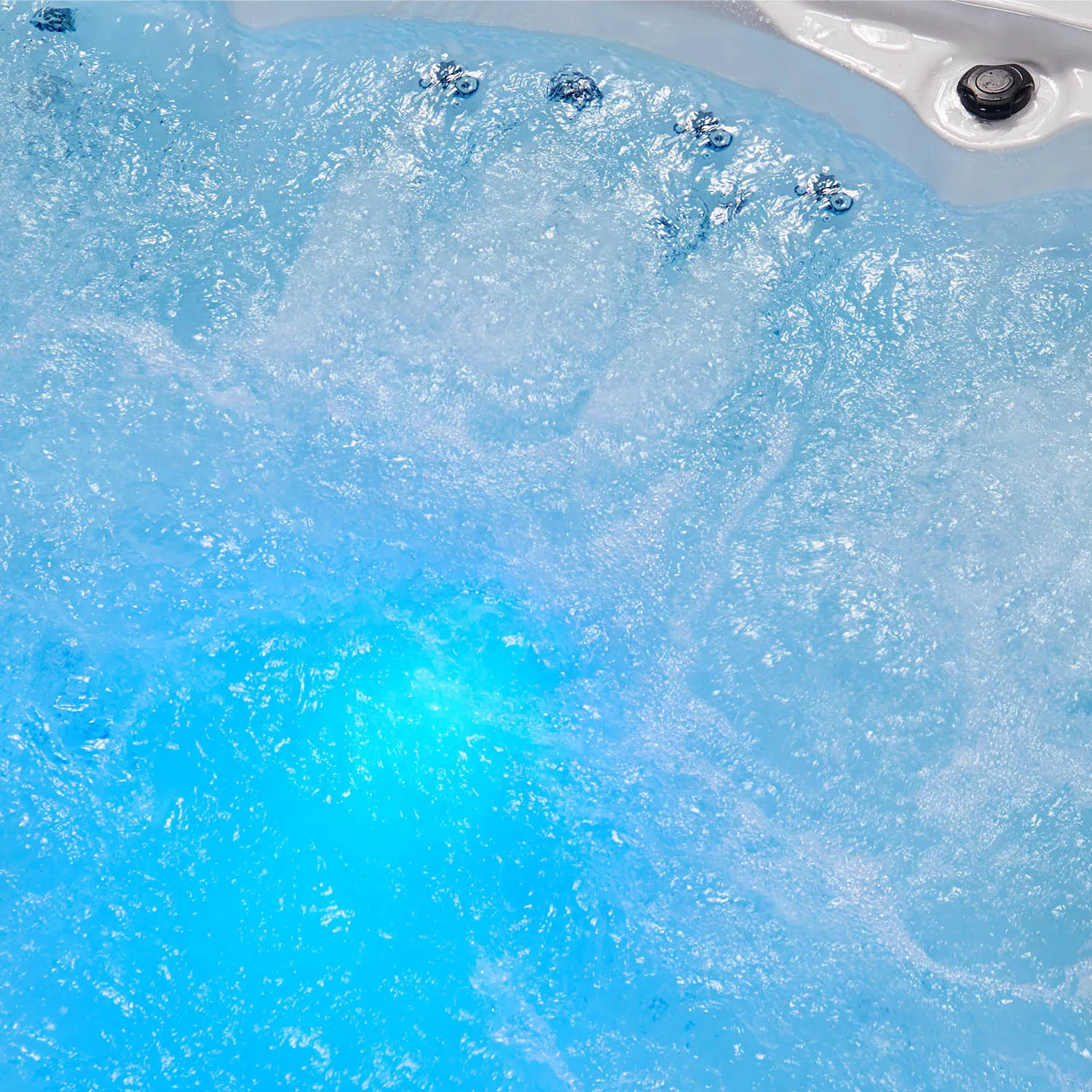
What factors affect the lifespan of a swim spa tub?
The lifespan of a swim spa tub depends not only on the materials and manufacturing process, but also on the environment, maintenance, and user habits.
1. Frequency of Use
• High-frequency use: This places heavy loads on the pump, pipes, and heating system, accelerating wear on the motor and electronic components.
• Low-frequency use: If the tub is not used for extended periods without proper drainage, scale, mold, and pipe blockage can easily form, also shortening its lifespan.
Therefore, whether used frequently or occasionally, maintenance measures are necessary to extend its lifespan.
2. Water Quality
• Hard water: High mineral content in the water can easily lead to scale formation, reducing heater efficiency and accelerating pump wear.
• Excessive chlorine or disinfectant concentration: Long-term use of high-concentration disinfectants can corrode pipes and showerheads, shortening component life.
• Water pollution: Excessive impurities or organic matter in the water can clog the filtration system and increase the load on the pump and pipes.
3. Environmental Factors
• Humidity and Ventilation: High humidity and poor ventilation in the bathtub space can easily lead to moisture in electronic components or mold in the pipes.
• Temperature Fluctuations: Frequent and drastic fluctuations in room temperature, especially in the winter when insulation is not available, can cause thermal expansion and contraction of materials, accelerating cracking.
4. Maintenance and Care
• Regular Cleaning: Remove scale, filters, and nozzles to prevent pipe blockage and extend the life of the pump.
• Disinfection: Regularly disinfect the water to prevent bacterial and algae growth and corrosion of pipes and nozzles.
• Part Replacement: Promptly replace vulnerable parts such as filter elements, rubber rings, and heating elements to ensure stable operation of the entire system.
5. Usage Habits
• Avoid Overloading: For example, running a water pump continuously for extended periods of time can cause the motor to overheat.
• Correct Operation: Do not disassemble electrical appliances or pipes without authorization. Always follow the manufacturer's instructions.
In summary, service life is not a fixed value but a dynamic result influenced by many factors. Proper use and maintenance are key to extending the life of the pump.
Swim Spa Tub: Component Lifespan Differences and Replacement Recommendations
While the overall lifespan of a swim spa tub can reach 15-20 years, the lifespans of different components vary significantly and require regular replacement based on usage.
1. Pump and Circulation System
• Frequent use and high water hardness can shorten the pump's lifespan to 5-7 years.
• Inspections are recommended every 2-3 years, including checks for bearing wear and motor temperature rise.
• Replace the pump body or internal seals as necessary to ensure proper water flow.
2. Heater
• Scale deposits are the primary factor affecting heater lifespan.
• Regular descaling and disinfection can extend the lifespan to 8-10 years.
• If uneven heating or temperature control failure occurs, the heating element should be replaced promptly.
3. Piping and Shower Heads
• PVC or PE piping can have a lifespan of 10-15 years under good conditions, but vulnerable parts, such as the shower head rubber ring, should be inspected every 2-3 years.
• Clogged or aged jets can affect the effectiveness of your spa treatments, so timely cleaning or replacement of parts is essential maintenance.
4. Control Panel and Electronic Components
• A high-quality control panel can last up to 10 years, but moisture or voltage fluctuations can cause premature failure.
• Regularly check the wiring, buttons, and touchscreen response, and replace the electronic module if necessary.
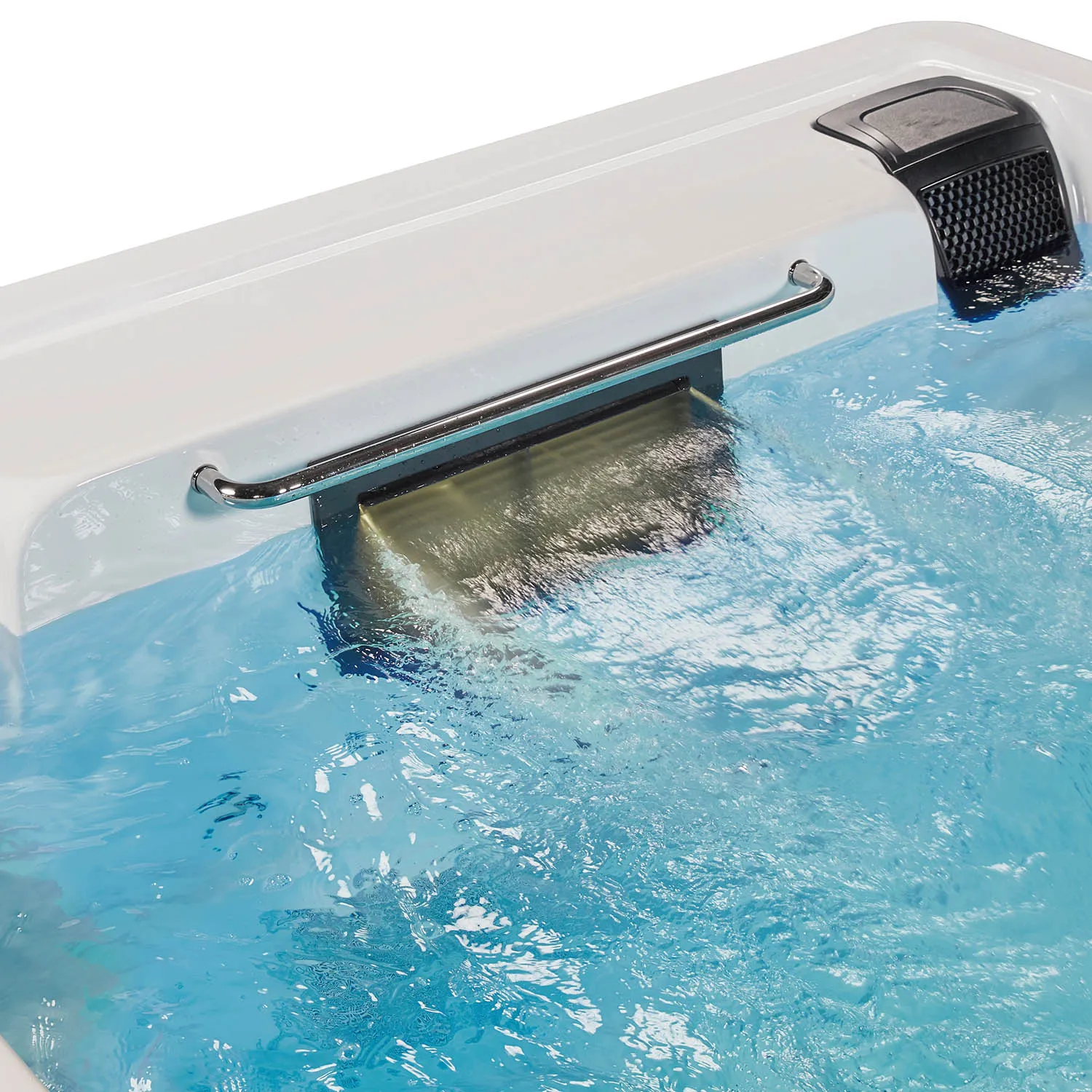
How can I extend the life of my swim spa tub?
• Regular Draining and Cleaning: Drain the water promptly after use and clean any residue from the bottom and jets to prevent scale and impurities from accumulating.
• Maintain the Circulation System: Regularly inspect the pump, pipes, and filter to ensure smooth water flow and reduce mechanical wear.
• Water Quality Management: Control water hardness and disinfectant concentration to prevent corrosion and pipe clogs.
• Maintain Ventilation and Dryness: Ensure the tub is located in an environment with moderate humidity and good air circulation to protect electronic components from moisture.
• Regular Inspection and Parts Replacement: Inspect the pump, motor, heater, and jets according to manufacturer recommendations, and replace any wearing parts promptly.
• Standard Operation: Avoid continuous operation or overloading for extended periods of time, and follow the operating instructions.
What certifications and quality guarantees does Yuehua provide?
Yuehua outdoor spas, swim spas, saunas, and massage bathtubs have passed multiple international certifications including CE (EU), SAA (Australia), and ETL (USA). Our company is also ISO9001:2015 certified and recognized as a high-tech enterprise in China.
With over 60 patents, our products are trusted by global distributors for their high quality and durability. By choosing Yuehua, you can buy directly from the manufacturer with confidence, knowing that every unit meets strict standards.

